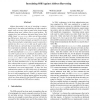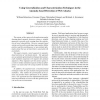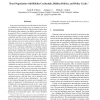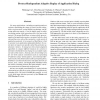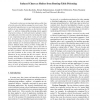NDSS
2006
IEEE
14 years 5 months ago
2006
IEEE
Volunteer distributed computations utilize spare processor cycles of personal computers that are connected to the Internet. The resulting platforms provide computational power pre...
NDSS
2006
IEEE
14 years 5 months ago
2006
IEEE
Software monocultures are usually considered dangerous because their size and uniformity represent the potential for costly and widespread damage. The emerging concept of collabor...
NDSS
2006
IEEE
14 years 5 months ago
2006
IEEE
Address harvesting is the act of searching a compromised host for the names and addresses of other targets to attack, such as occurs when an email virus locates target addresses f...
NDSS
2006
IEEE
14 years 5 months ago
2006
IEEE
The custom, ad hoc nature of web applications makes learning-based anomaly detection systems a suitable approach to provide early warning about the exploitation of novel vulnerabi...
NDSS
2006
IEEE
14 years 5 months ago
2006
IEEE
When dealing with malware infections, one of the first tasks is to find the processes that were involved in the attack. We introduce Malfor, a system that isolates those process...
NDSS
2006
IEEE
14 years 5 months ago
2006
IEEE
In an open environment such as the Internet, the decision to collaborate with a stranger (e.g., by granting access to a resource) is often based on the characteristics (rather tha...
NDSS
2006
IEEE
14 years 5 months ago
2006
IEEE
NDSS
2006
IEEE
14 years 5 months ago
2006
IEEE
Time zones play an important and unexplored role in malware epidemics. To understand how time and location affect malware spread dynamics, we studied botnets, or large coordinated...
NDSS
2006
IEEE
14 years 5 months ago
2006
IEEE
For many applications—including recognizing malware variants, determining the range of system versions vulnerable to a given attack, testing defense mechanisms, and filtering m...
NDSS
2006
IEEE
14 years 5 months ago
2006
IEEE
Structured overlays are an important and powerful class of overlay networks that has emerged in recent years. They are typically targeted at peer-to-peer deployments involving mil...

